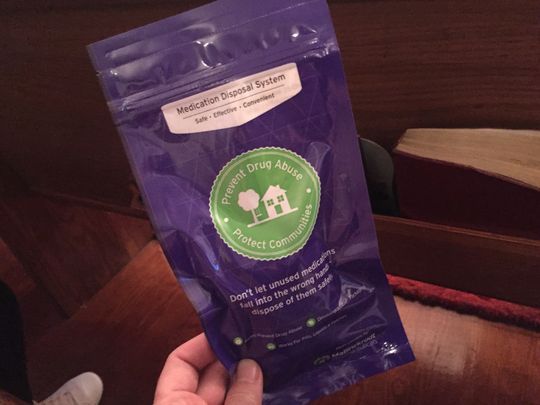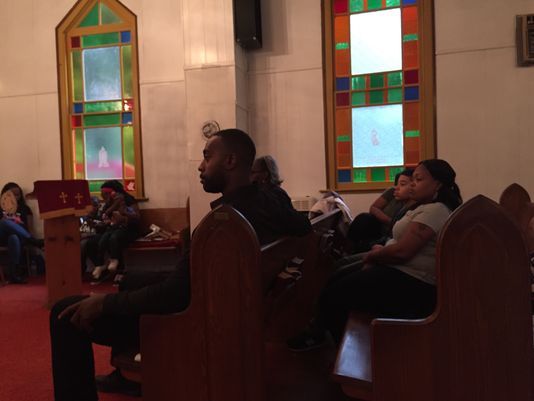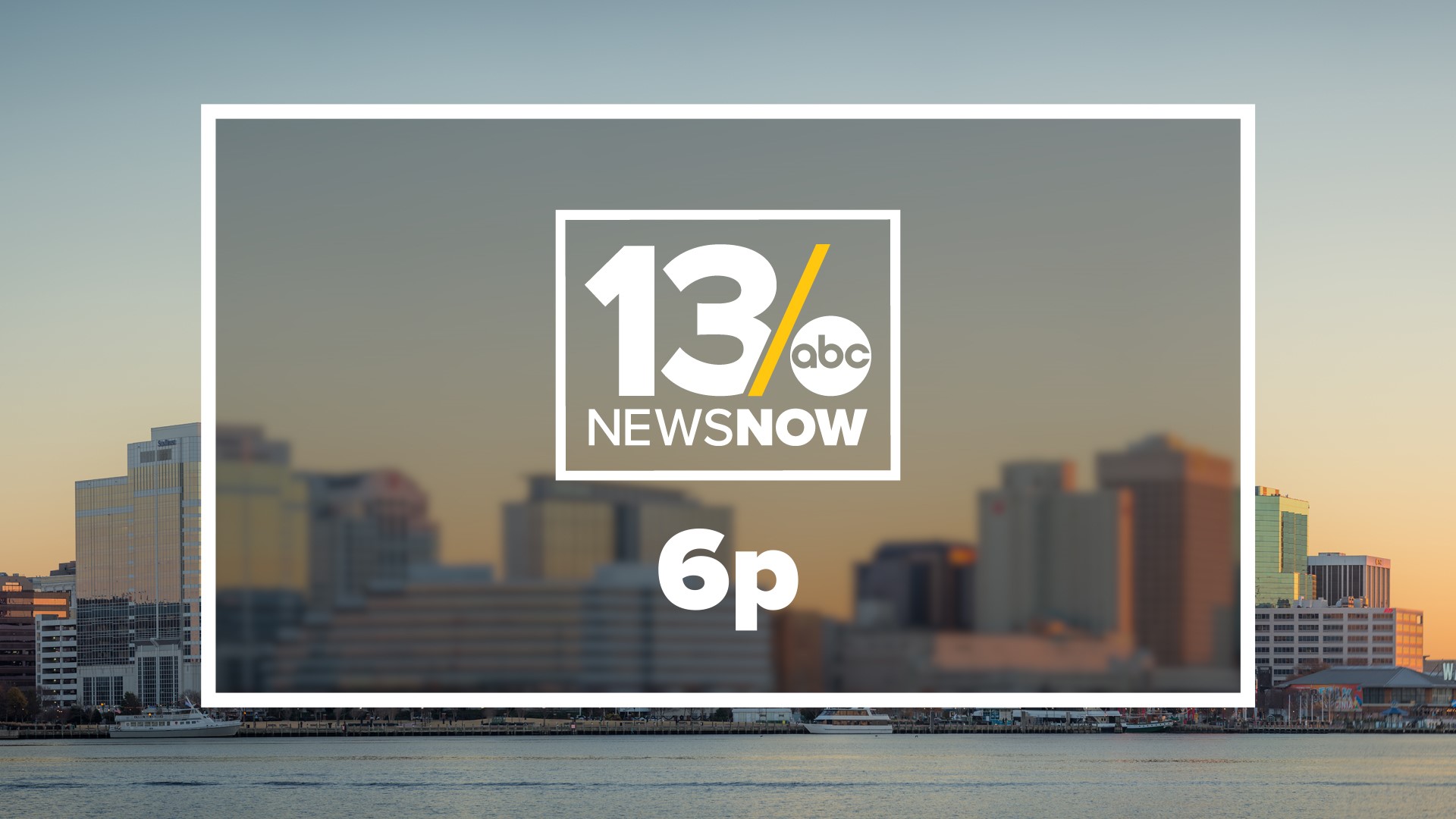(Delmarvanow.com) -- The rural Eastern Shore of Virginia may not have seen the large numbers of drug overdose deaths experienced in more densely populated regions, but the numbers are still sobering.
Thirty people — 20 males and 10 females — died of drug overdoses on the Eastern Shore of Virginia between 2012 and 2016, according to Dr. David Matson, director of the Eastern Shore Health District. The figures come from the Office of the Chief Medical Examiner.
The youngest victim was in the upper 20s and the oldest in the 60s, Matson said. Most were middle-aged — in their 40s or 50s.
Additionally, as of July, 21 people on the Eastern Shore of Virginia this year had visited the emergency room for unintentional opioid overdoses, according to the Virginia Department of Health.
Police in July concluded a 16-month investigation on Virginia's Eastern Shore that resulted in 50 indictments on drug-related charges for more than 100 separate counts involving heroin, cocaine, crack cocaine and prescription drug possession, and felony firearms violations.
The long-term undercover narcotic investigation, "Operation Firecracker," was conducted by the Eastern Shore Drug Task Force, consisting of personnel from the Accomack and Northampton County sheriff's offices and the state police.
One Accomack County woman, in response to news about overdoses and drug-related crimes on the Shore, decided to sponsor an event at her church to promote awareness of the problems of opioid abuse and also domestic violence.
Cheryl Carr-Wilson invited Matson and actor Julian Brittano — the nephew of a high-school classmate — to speak at the Sept. 6 event at Mt. Nebo Baptist Church.
The forum was held on a night in which a storm dumped inches of rain on the area.
Additional speakers were Kentoya Downing-Garcia, a local historian who also is outreach and volunteer coordinator at the Eastern Shore Coalition against Domestic Violence, and self-help author Delbra Brown.
Brittano co-stars with Oprah Winfrey on the OWN television network show "Greenleaf" and is producing a television crime drama, "Exposé," which will focus on drug abuse.
"This is going to be a long haul — a long struggle for this country," Matson told the audience at Mt. Nebo.
He distributed opioid medication disposal kits to the group after demonstrating how the kits are used.
The kits, which use activated charcoal to safely dispose of unwanted prescription medications, are available free of charge at the health department, he said.
"There are more people dying from overdose in Virginia than die from car injuries — any type of injury. ... It's the number one cause of death in Virginia," Matson said.

Britanno spoke about using the medium of television to reach people affected by the drug crisis.
"They don't watch Fox News, they don't watch CNN, they don't watch news platforms — they watch drama, reality TV. They love drama. ... So, guess what — we're going to have to give them drama to reach them," he said.
Britanno during his visit to the Eastern Shore also held a casting call for an episode of the series he said he will film on the Shore.
Increasing every year
More than 1,400 Virginia residents died of drug overdoses in 2016 — with 1,133 of those deaths coming from heroin or prescription opioid overdoses, according to the Virginia Department of Health.
Heroin overdose deaths in the state have increased every year since 2010 — and they increased by 31 percent between 2015 and 2016.
Drug overdose has been the leading method of unnatural death in Virginia since 2013 and the leading method of accidental death since 2014 — and opioids are the driving force behind the large increases in fatal overdoses, according to the Virginia Department of Health.
Virginia Commissioner of Health Dr. Marissa Levine last year declared the opioid epidemic a public health emergency, and Gov. Terry McAuliffe recently announced the 2017 Governor's Datathon will focus on addressing the crisis.
The event includes 15 teams working with the Governor's Data Internship program, which will spend two days working on solution development in collaboration with experts, government officials and nonprofit organizations, according to a press release.
"Our response to address prevention, treatment and law enforcement intervention needs to be data-driven and tailored to the specific needs of individual communities," McAuliffe said, adding, "Collaborative responses and strategies involving both public safety and public health are imperative to ending this crisis in Virginia, so I am pleased that we can channel the expertise of the brilliant people who participate in the Datathon to address this critical issue."
Team presentations will be Sept. 29 at the Library of Virginia and are open to the public. The top three teams will receive awards.
The number of illegal opioid deaths in Virginia surpassed deaths from prescription opioid overdoses in 2015, with the trend continuing and strengthening last year.
A deadly opioid in the mix
Fentanyl — a synthetic opioid 50 times more potent than heroin and 100 times more potent than morphine, according to the Centers for Disease Control — is involved in many of those deaths.
While fentanyl is a prescription drug, it also is being manufactured illicitly — and often is mixed with heroin or cocaine in order to increase the drugs' effect.
"It's a one-pot synthesis — and it can be done at room temperature," Matson said in an interview.
Fatal fentanyl overdoses, whether of prescription or illicit versions of the drug, increased by more than 176 percent in Virginia from 2015 to 2016 — going from 225 to 622 deaths in one year.
"It just exploded," said Matson.
Dr. David Matson, director of the Eastern Shore of Virginia Health District, spoke about the opioid epidemic at Mt. Nebo Baptist Church near Onancock, Virginia on Wednesday, Sept. 6, 2017. Carol Vaughn video
Cocaine overdoses also are on the rise, but more than half of fatal cocaine overdoses in 2016 also involved fentanyl, according to the Virginia Department of Health.
Heroin deaths have gone up, too, "but heroin that excludes fentanyl is pretty flat," Matson said.
Counterfeit pills are increasingly a factor in the state's drug crisis, according to Matson.
"These folks who are making counterfeit pills are making the pills look just like something that's legit — like a Valium — so a person gets stopped, searched and they pull out this Valium prescription ... and it's got a barcode on it from Rite-Aid, it's got that person's name, so it looks exactly like a legitimate prescription," he said, adding, "That's the only thing that's keeping the cartels in business, is becoming high tech."
Last year there were 47 legitimate companies in the United States that sold the starter compound that can be used to manufacture illicit fentanyl, Matson said.
"It's not hard to get," Matson said, adding, "What that means it that it's a whole lot harder to intervene with policy or a system to stop the production of illicit opioids — and fentanyl is the main one."
Makers of the illicit version of the drug don't necessarily know how powerful a batch is until it hits the streets, making it extremely dangerous.
"It's what happens when you sell it," Matson said.
'A typical, modern fentanyl death'
Fentanyl suppresses respiration and paralyzes the chest wall, "so that, in four minutes after I've taken this, I'm dead because I stopped breathing," he said.
Matson gave an example of "a typical, modern fentanyl death" — "a 52-year-old man who raises vegetables for sale at the farm market or at specialty grocery stores; he has done his morning watering and he is resting, reading; his partner is upstairs, working on the computer and stops hearing the man moving around downstairs, calls out the person's name and doesn't get an answer ... eventually goes downstairs and there's the person, dead on the couch.
"Part of their reward for their morning work was a high, and what they used, they didn't realize would kill them," he said, adding, "That's a real story."
The problem stems in part from chronic pain, from which 1 in 3 Americans suffers, according to the Institute of Medicine.
As it becomes more difficult to get a prescription for opioid medications, more people appear to be turning to illicit drugs.
"A question was asked of the head of the Virginia prescription monitoring program database, 'Is this increased clampdown pushing more people into the illicit realm?' — and in the short term, the answer has to be yes," Matson said.
The Centers for Disease Control on Aug. 25 issued a health alert warning to public health departments, health care professionals and first responders about an influx of fentanyl-laced counterfeit pills that puts more people at risk for a fatal overdose.
The Drug Enforcement Administration's National Forensic Laboratory Information System, which collects drug identification results from cases submitted for analysis to forensic labs, reported the supply of illicitly made fentanyl "appears to have substantially increased from 2014 to 2015."
The number of submissions to labs testing positive for illicit fentanyl more than doubled during the period, from 5,343 to 13,882, according to the alert.
Not surprisingly, administrations of naloxone — a treatment used to reverse opioid overdose effects — also have gone up.
In Virginia, first responders administered 4,076 doses of Narcan in 2016 — a rate of 48.5 per 100,000 members of the population. On the Eastern Shore of Virginia, the rate was 37.7 — but the rate for middle-age people, ages 35 to 54, was much higher on the Shore, between 87 and 89.
Matson gestured toward the doors leading outside the sanctuary at Mt. Nebo — extending an invitation to the audience to listen to the sound of the deluge outside.
He drew a comparison between the rainstorm and the influx into the region of opioids — especially illicit fentanyl — saying, "We don't have enough doctors, nurses and other people in medical facilities to take care of the overdoses, it's so bad — it's a flood."


